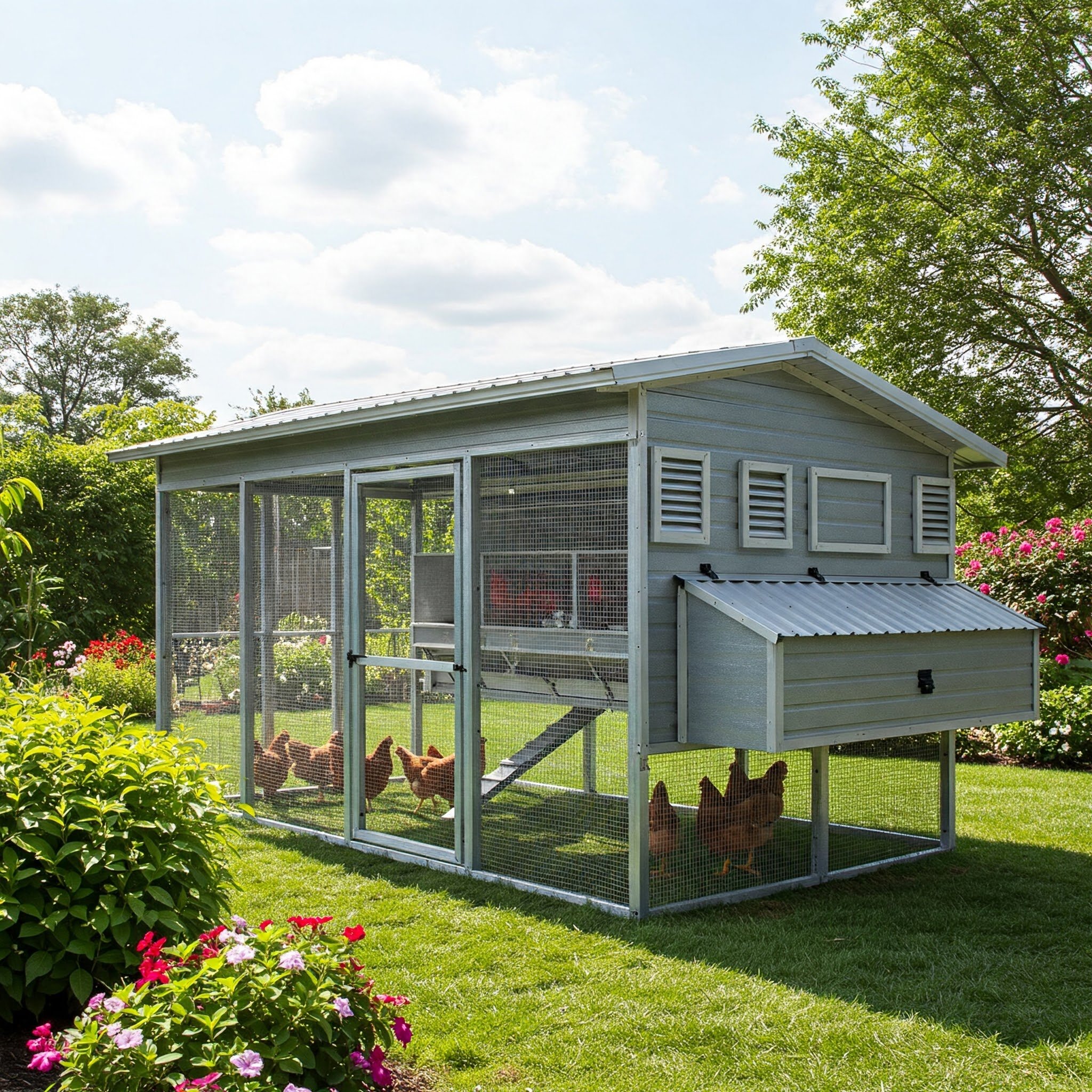How Many Potatoes Does a Single Plant Produce?
Curious about potato yields? Learn how many potatoes a single plant produces and tips to maximize your harvest with this in-depth guide.
Potatoes are a kitchen staple, loved for their versatility and ease of preparation. But if you’re venturing into gardening, you might be wondering, “How many potatoes does a single plant produce?” It’s a fair question, especially if you’re hoping to fill your pantry with homegrown spuds!
In this guide, we’ll dig deep into the factors that influence potato yields, from soil conditions to plant care. Plus, we’ll share tips to ensure your harvest is bountiful. So, grab your gardening gloves and let’s unearth the secrets of potato production!
What Determines Potato Yield?
Potato production isn’t an exact science—it’s more of a delicate balance of factors. Here’s what influences how many tubers you’ll get from a single plant:
Variety of Potato: Some types naturally yield more than others.
Growing Conditions: Sunlight, water, and soil quality all play a role.
Plant Care: Proper hilling, watering, and fertilizing can significantly boost your harvest.
Pest and Disease Management: Healthy plants mean more potatoes!
Growing a bountiful potato harvest involves more than just planting and waiting—it’s about understanding the factors that influence yield and giving your plants the best care possible. The variety of potato you choose can make a big difference, as some types naturally produce more tubers than others. Growing conditions also play a critical role; potatoes thrive in well-drained soil, plenty of sunlight, and consistent watering. Beyond that, proper plant care, such as regular hilling, balanced fertilizing, and attentive watering, can significantly boost your harvest. Finally, effective pest and disease management ensures healthy plants that produce more potatoes. By paying attention to these key factors, you can maximize your potato crop and enjoy a rich and rewarding harvest.
How Many Potatoes Does a Single Plant Produce?
Alright, let’s get to the nitty-gritty. On average, a single potato plant produces:
8 to 10 Potatoes: This is the standard yield under good conditions.
Weight: Each plant can yield about 2 to 6 pounds of potatoes.
Potatoes are a versatile and rewarding crop to grow, and understanding their yield potential can help you plan your planting and harvesting. Under good growing conditions, each potato plant typically produces 8 to 10 potatoes, making them a high-yield choice for home gardens. In terms of weight, a single plant can yield anywhere from 2 to 6 pounds of potatoes, depending on the variety and care provided. Factors such as soil quality, sunlight, watering, and pest control all play a role in maximizing your harvest. By nurturing your plants and maintaining ideal growing conditions, you can enjoy a generous yield of fresh, homegrown potatoes, perfect for your kitchen and table.
Types of Potatoes and Their Yields
Not all potatoes are created equal. Here’s a breakdown of common potato types and their typical yields:
1. Russet Potatoes
Known for their large size and fluffy texture, russets can yield fewer but larger potatoes.
Yield: 6-8 large potatoes per plant.
2. Yukon Gold Potatoes
A favorite for their buttery flavor, Yukon Golds produce medium-sized tubers.
Yield: 10-12 medium potatoes per plant.
3. Fingerling Potatoes
These small, narrow potatoes are prolific producers.
Yield: 15-20 tubers per plant.
4. Red Potatoes
Popular for roasting, red potatoes typically yield moderate-sized tubers.
Yield: 8-12 potatoes per plant.
Different potato varieties offer unique characteristics and yield potential, making them suitable for various culinary and gardening needs. Russet potatoes are prized for their large size and fluffy texture, often yielding 6-8 large potatoes per plant, making them ideal for baking and mashing. Yukon Gold potatoes, known for their buttery flavor, produce 10-12 medium-sized tubers and are perfect for boiling or frying. For those looking for quantity, fingerling potatoes are prolific, yielding 15-20 small, narrow tubers per plant, great for salads or roasting. Red potatoes, loved for their vibrant color and firm texture, offer a moderate yield of 8-12 potatoes per plant, ideal for roasting or stewing. Choosing the right variety ensures a harvest tailored to your taste and needs.
Stages of Potato Growth and Yield Potential
Understanding how potatoes grow helps you predict their yield. Here’s a quick rundown:
1. Sprouting Stage
The seed potato (or “seed piece”) sends out shoots, which become the plant’s stem and leaves.
2. Vegetative Growth
Leaves and stems grow, storing energy for tuber production.
3. Tuber Initiation
Tubers begin forming underground, typically 30-40 days after planting.
4. Tuber Bulking
Tubers grow larger, taking up water and nutrients from the soil.
5. Maturation
The plant’s growth slows, and the tubers reach their final size.
Understanding the growth stages of potatoes can help you optimize care and maximize your harvest. Potatoes begin with the sprouting stage, where the seed potato, or “seed piece,” sends out shoots that develop into the plant’s stem and leaves. During vegetative growth, the plant focuses on growing leaves and stems, storing energy essential for tuber production. Next comes tuber initiation, typically 30-40 days after planting, when tubers start forming underground. In the tuber bulking stage, these tubers grow larger by absorbing water and nutrients from the soil. Finally, during maturation, the plant slows its growth, and the tubers reach their full size. Understanding these stages helps you provide the right care at the right time for a successful potato harvest.
How to Maximize Potato Yields
Want to get the most out of each plant? Follow these tips:
1. Start with Quality Seed Potatoes
Choose certified seed potatoes, free of disease and pests.
Avoid planting potatoes from the grocery store—they’re often treated to prevent sprouting.
2. Prepare the Soil
Potatoes thrive in loose, well-draining soil with a slightly acidic pH (5.0-6.0).
Mix in compost or organic matter to boost nutrient levels.
3. Hill Your Plants
As the plants grow, mound soil around the base of the stems.
Hilling prevents tubers from being exposed to sunlight, which can turn them green and toxic.
4. Water Wisely
Potatoes need consistent moisture, especially during the tuber bulking stage.
Water deeply but avoid waterlogging, which can lead to rot.
5. Fertilize Regularly
Use a balanced fertilizer rich in phosphorus and potassium but low in nitrogen.
Over-fertilizing with nitrogen leads to lush foliage but fewer tubers.
6. Space Plants Correctly
Crowded plants compete for nutrients, leading to smaller yields.
Space plants 12-15 inches apart in rows 24-36 inches apart.
Growing a successful potato crop starts with proper planning and care at every stage. Begin by selecting quality seed potatoes, ideally certified and disease-free, as grocery store potatoes are often treated to inhibit sprouting. Next, prepare the soil—potatoes thrive in loose, well-draining soil with a slightly acidic pH (5.0-6.0) enriched with compost or organic matter. As your plants grow, remember to hill them regularly, mounding soil around the stems to protect the developing tubers from sunlight exposure, which can turn them green and toxic. Provide consistent watering, particularly during the tuber bulking stage, while avoiding waterlogging. Use a balanced fertilizer, low in nitrogen, to encourage tuber production over foliage growth. Finally, space your plants correctly to reduce competition for nutrients and maximize yields.
Common Problems That Reduce Yields
Even the best-laid plans can go awry. Watch out for these common issues:
1. Pests
Potato Beetles: Handpick them off plants or use organic insecticides.
Wireworms: Rotate crops and avoid planting in recently grassy areas.
2. Diseases
Blight: Use disease-resistant varieties and avoid overhead watering.
Scab: Keep soil slightly acidic to deter this bacterial disease.
3. Poor Soil Conditions
Compact or overly wet soil can limit tuber growth.
Regularly aerate and amend the soil for best results.
Growing healthy potatoes requires vigilance against common challenges like pests, diseases, and soil issues that can hinder your crop. Pests, such as potato beetles and wireworms, are frequent culprits. Handpick beetles off plants or use organic insecticides, and rotate crops to avoid wireworms, especially in areas recently covered by grass. Diseases, like blight and scab, can also pose problems. Combat blight by planting disease-resistant varieties and avoiding overhead watering, while slightly acidic soil helps deter scab. Poor soil conditions, including compacted or overly wet soil, can limit tuber growth. Regularly aerate and amend your soil with organic matter to maintain an ideal environment. Addressing these issues promptly ensures a thriving potato crop and a successful harvest.
Conclusion
So, how many potatoes does a single plant produce? While the average is 8-10 tubers, your yield depends on a mix of factors like variety, care, and growing conditions. By choosing the right seed potatoes, preparing your soil, and following best practices, you can maximize your harvest and enjoy homegrown spuds that are as rewarding to grow as they are to eat.
Happy gardening, and may your potato harvest be as bountiful as your enthusiasm!
Frequently Asked Questions
1. How long does it take for potatoes to grow?
Potatoes typically take 70-120 days to mature, depending on the variety.
2. Can I grow potatoes in containers?
Absolutely! Containers are great for small spaces and can yield 5-10 potatoes per plant.
3. What’s the best time to harvest potatoes?
Harvest new potatoes 60-70 days after planting or mature potatoes when the foliage dies back.
4. Can I reuse the soil for the next crop?
It’s best to rotate crops and avoid planting potatoes in the same soil for at least 2 years.
5. Why are my potatoes small?
Small potatoes may result from poor soil, inconsistent watering, or overcrowding.
































